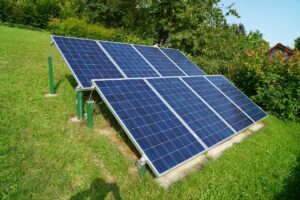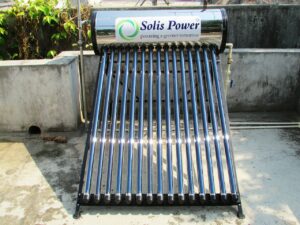Delve into Crucial Topics Surrounding Solar Energy
- Uncover the 12 Benefits and Drawbacks of Solar Energy
- A Thorough Understanding of Solar Energy: An In-Depth Analysis
- Seamlessly Install Solar Lights for Your Home and Outdoor Spaces
- Explore the Essential Benefits of Solar Energy
- Harness Solar Energy: Your Comprehensive Guide to Sustainable Home Energy
- The Ultimate Guide to Home Solar Batteries: Optimize Your Energy Storage
- Smart Strategies for Storing Solar Energy at Home
- A Complete Guide to Heating Your Pool with Solar Panels
- A Comprehensive Evaluation of Nuclear Energy's Advantages and Disadvantages
- In-Depth Exploration of Nuclear Energy's Key Benefits
- How Solar Panels Function: A Detailed Mechanism Explanation
- Assessing the Effects of Reduced Sunlight on Solar Energy Efficiency
- Analyzing the Pros and Cons of Wind Energy
- Understanding the Key Benefits of Wind Energy for Sustainable Power
- Comprehensive Evaluation of Hydropower's Advantages and Disadvantages
Uncover the 12 Benefits and Drawbacks of Solar Energy
As a homeowner contemplating the installation of solar panels, it's essential to thoroughly understand the benefits and drawbacks associated with solar energy. This insightful exploration will cover critical factors that significantly influence your decision-making journey. One pivotal element is the solar watt energy manager, a cutting-edge control unit crafted for peak energy management in residential settings. This advanced technology proficiently tracks both energy generation and energy consumption, delivering countless advantages for improving energy efficiency in your home.
The ongoing debate about nuclear energy serves as a compelling example of the multifaceted nature of renewable energy sources. Both proponents and opponents of nuclear power passionately articulate their viewpoints, underscoring a range of benefits and challenges. By gaining a comprehensive understanding of these pros and cons, you will be better equipped to make informed decisions regarding your energy consumption and sustainable practices.
While the majority of solar energy systems are designed for user-friendliness, certain challenges may arise due to limited installation space and specific configurations required for optimal performance. Homeowners must ensure they have adequate access, such as a suitable roof or ample backyard space, to effectively install solar arrays. Those living in apartments or condominiums may face significant barriers in setting up personal solar arrays and often need to collaborate with property management to explore shared solar solutions that can benefit multiple residents.
The environmental advantages of solar energy are irrefutable; it plays an essential role in the creation of green buildings, leveraging renewable resources like solar, wind, and geothermal energy. This pivotal shift not only reduces our dependence on fossil fuels but also significantly lowers our overall carbon footprint. However, the effectiveness of solar installations depends heavily on their location; nearby trees or structures can obstruct sunlight, thereby diminishing efficiency. Homeowners should also take architectural design into account, as some building styles may not be conducive to solar panel installations.
Recent developments in Vietnam reveal plans to significantly reduce feed-in tariffs for rooftop solar installations by up to 38% next month, a move aimed at easing the burden on the nation's power grid. According to reports from Dai Doan Ket newspaper, Hoang Tien Dung, who leads the Ministry of Industry and Trade's Electricity and Renewable Energy Bureau, stated these tariffs will drop to between US$0.052 and US$0.058 per kilowatt-hour, contingent on system size.
If your energy bills indicate a significant potential for reduction, solar energy could serve as an effective solution. By harnessing the sun's abundant energy, you can power your home while potentially decreasing or even eliminating your reliance on the traditional power grid. Additionally, solar energy systems are generally low-maintenance throughout their operational lifespan, making them an appealing choice for homeowners focused on sustainability.
Seamlessly Install Solar Lights for Your Home and Outdoor Spaces
Whether you're utilizing solar energy in a motorhome, a campsite, or your residential property, the majority of solar-powered devices are designed with portability and user-friendliness in mind. You can choose to invest in standalone solar products like solar lanterns and decorative fairy lights, or enhance your mobility with portable solar panels and batteries to create a versatile solar system tailored to your specific needs.
Among the top contenders in the solar generator market is the Suaoki model, recognized for its affordability and simple setup. This generator provides three distinct charging options, allowing you to recharge it outdoors with the Suaoki 60W solar panel or through any compatible solar panel, AC plug, or DC input available in your vehicle. With a substantial battery capacity of 444Wh, this lightweight generator weighs just over 12 pounds, making it an ideal companion for camping trips, agricultural endeavors, fishing, hunting, or construction projects.
Now that you have a foundational understanding of solar energy, consider engaging in enjoyable solar projects with children that are both educational and easy to execute at home. For instance, creating a solar oven can turn a sunny day into an opportunity to prepare delicious meals such as pizza, hot dogs, or cheesy nachos. With the aid of instructional videos, you can transform a simple lesson into a fun afternoon project for the entire family.
A recent solar lighting initiative showcased the adaptability of portable solar lights. A client sought lighting solutions for various applications, including parking lots and adjacent construction sites. Rather than excavating trenches for permanent lights, they opted for portable solar lights, which can be easily moved by forklifts. This innovative approach ensured that both the parking areas and the construction site remained well-illuminated, demonstrating the practicality of transitioning away from conventional lighting methods.
Explore the Essential Benefits of Solar Energy
The realm of solar energy is filled with valuable insights; however, misinformation can often obscure the truth. In this segment, we will comprehensively examine the myriad benefits and drawbacks associated with installing solar panels and the solar energy sector as a whole. The advantages of solar energy span various dimensions, encompassing financial, social, and environmental benefits. While some of these perks are widely acknowledged, others may not be immediately obvious; we will dissect each aspect in detail.
Ultimately, solar energy presents significant benefits compared to its disadvantages, solidifying its position as the most accessible form of renewable energy available worldwide. From residential spaces to commercial establishments, integrating solar energy systems can lead to reduced electricity expenses and diversify energy sources in preparation for potential emergencies. Additionally, as advancements in technology continue to emerge, solar energy systems are becoming increasingly efficient and cost-effective, promoting wider adoption among homeowners and business operators alike.
Explore these informative videos featuring industry experts discussing the advantages and disadvantages of hydropower; they dive into the discourse surrounding various renewable energy sources. Environmental advocates frequently voice concerns regarding dam construction, sparking conversations about the long-term sustainability of hydropower. Will we prioritize renewable energy sources like solar, or will we continue to rely on fossil fuels? Is hydropower a financially viable solution, and what potential drawbacks might arise from its implementation?
In summary, the Hi-mo3 half-cut bifacial PERC module series has been at the forefront of advancing monocrystalline PERC technology. This series is distinguished by its high power output, exceptional yield, and low capital expenditure (CapEx). The Hi-mo3 employs half-cut technology to reduce the operating current of the solar cells, effectively minimizing resistive losses and increasing power output by an impressive 5-10 watts. Additionally, the bifacial technology enables the front panel to achieve a power output of 320W (60-cell), with a bifaciality ratio surpassing 75%.

Harness Solar Energy: Your Comprehensive Guide to Sustainable Home Energy
Identifying which renewable energy source is the most advantageous can be an intricate task. Solar energy, which generates electricity through photovoltaic cells, is increasingly being embraced by both homeowners and businesses. The installation of solar panels comes with numerous benefits, such as lower energy expenses and enhanced energy autonomy. As a static energy solution devoid of moving parts, solar panels present a dependable option for capturing clean energy, thereby contributing significantly to your sustainability objectives.
The Ultimate Guide to Home Solar Batteries: Optimize Your Energy Storage
Every homeowner deserves the chance to harness solar energy on their property. In numerous states, this right is safeguarded by solar access laws, which prevent local governments and homeowners' associations (HOAs) from obstructing solar energy installations. However, these regulations are not universally enforced, and in compliant states, some HOAs may still impose outdated rules that hinder homeowners from utilizing solar technology. This comprehensive guide aims to assist you in navigating HOA objections regarding your solar installation, offering effective strategies to enhance your home's solar compatibility.
While solar energy systems present a variety of advantages and disadvantages, if this article has piqued your interest, our 6-step guide could be beneficial in discovering the most suitable solar panels tailored to your home. This guide encompasses various aspects, including roof suitability, selecting the appropriate type of solar panels, understanding costs, exploring savings opportunities, and maintenance recommendations.
For those looking into battery backup solutions, companies like SolarCity provide Tesla Powerwall batteries, specifically designed to supply backup energy during outages and natural disasters. The Powerwall is compact, stackable, and includes a built-in inverter, allowing seamless integration with SolarCity's solar power systems.
Historically, storing solar energy has posed challenges, as battery technology has lagged behind production advancements. While we can efficiently generate substantial electricity, the act of storing it for use during nighttime or cloudy days remains problematic. Many homeowners encounter difficulties managing energy storage while also selling surplus energy back to utility companies.
Smart Strategies for Storing Solar Energy at Home
Recognized as one of the most effective methods to generate renewable energy for residential properties, solar energy systems are generally affordable, straightforward to install, and require minimal upkeep. Nonetheless, it's crucial to acknowledge that this energy solution may not be ideal for every situation. Like any energy source, solar energy has its own benefits and drawbacks. Before deciding to adopt solar for your home or business, it is prudent to look beyond marketing claims and comprehend the essential facts.
The sun emits an astounding amount of energy, taking approximately 8 minutes for its rays to traverse the vast distance to reach Earth. Remarkably, enough solar energy strikes the planet each hour to power the entire globe for an entire year. This staggering potential prompts questions regarding how to effectively harness it for personal consumption. The solution lies in solar panels.
The 2018 Solar Power Portal Awards are currently open for entries, as highlighted by Clean Energy News. This prestigious event, now in its sixth year, has become a key highlight in the UK renewables industry calendar, marking a significant rebranding effort. The Solar Power Portal and Energy Storage News will come together to celebrate the dynamic battery storage market at home and on a global scale.
By implementing distributed energy generation, energy efficiency improves and waste diminishes, with the energy generators being located closer to consumers. Utilizing renewable energy sources such as solar and wind to generate electricity in homes and businesses enhances the viability of this model. Smaller microgrid units are less susceptible to simultaneous failure compared to larger systems, rendering distributed generation systems more reliable. Moreover, the consequences of failure are less severe for a small unit than for a large one.
A Complete Guide to Heating Your Pool with Solar Panels
The applications of solar energy extend beyond conventional solar panels; solar water heaters are prevalent options for heating and storing water, especially in cooler climates. These systems work by absorbing heat from sunlight using solar thermal collectors. The efficiency of solar water heaters is largely contingent upon the availability of sunlight, enabling them to effectively cater to the demand for warm water during sunny conditions.
Diverse solar panel systems can also be utilized for heating water. Thermal solar solutions present environmentally friendly alternatives to gas boilers and traditional water heaters, offering sustainable methods for heating water.
In the realm of solar science kits for children, exciting advancements have emerged within the solar toy market. With scalable technology, miniature solar-powered products have gained popularity, delivering both fun and educational experiences. These solar kits can ignite curiosity and enhance understanding of solar energy concepts among young learners.
To introduce children to the concept of ‘solar thermal energy,' it's essential to highlight that the most commonly utilized solar technologies today are solar water heaters and pool heaters, both operating on this principle. While solar panels are often the first thought when considering solar energy, thermal solar solutions provide a cost-effective entry point for those looking to adopt solar technologies.
Solar panels are primarily designed to lower energy costs and power household appliances and devices; however, they can also be employed for various additional applications. This includes managing your pool and shower heaters, as well as charging devices like phones, radios, laptops, and more. The potential of solar energy is remarkable, offering a vast array of products that can benefit from its renewable power.
A Comprehensive Evaluation of Nuclear Energy's Advantages and Disadvantages
In our current landscape, there exists a collective pursuit of green and renewable energy to bolster environmental sustainability. Solar panels frequently emerge as the preferred choice for individuals seeking clean energy alternatives. However, akin to any energy solution, the installation of solar panels (or solar-integrated products) carries a unique set of advantages and disadvantages. This discussion will focus on the crucial pros and cons of solar energy systems.
Like any energy source, the adoption of solar energy presents both rewards and challenges. The high initial costs can pose a significant hurdle; while solar energy can lead to lower electricity bills, the upfront investment for equipment and installation can exceed $20,000. Furthermore, powering devices that operate on direct current (DC) may incur additional costs.
The process of nuclear power generation involves a complex, multi-step methodology aimed at containing energy and its associated negative byproducts. This intricate process contributes to the various advantages and disadvantages related to nuclear energy production.
Although solar energy does present its own challenges, extensive research is essential to refine the technology before it can be fully relied upon. Nonetheless, the unsustainable nature of fossil fuel consumption highlights the pressing need to transition towards renewable energy solutions. By addressing the limitations of solar power, society can pave the way towards a more sustainable energy future through technological advancements and strategic planning.
In-Depth Exploration of Nuclear Energy's Key Benefits
Despite the controversies and potential downsides surrounding nuclear energy, it does offer notable advantages when compared to other energy production methods. Nuclear energy generation is typically low-cost, reliable, and does not emit harmful greenhouse gases.
Various strategies are employed to ensure consistent power generation and meet load demands. This article offers a closer examination of solar energy, emphasizing its benefits and drawbacks relative to other energy sources such as thermal, wind, and nuclear energy.
A primary reason nuclear energy often faces criticism is due to its associated drawbacks, including uranium mining, water pollution, waste disposal, leaks, and safety concerns tied to reactor failures.
Given the numerous benefits and drawbacks of nuclear energy, it’s understandable why it remains a contentious subject. It is vital to educate yourself on this matter to form a well-informed opinion regarding the future use of nuclear energy.
How Solar Panels Function: A Detailed Mechanism Explanation
Many electricity suppliers provide buy-back programs for surplus energy generated by solar panels and other home appliances. These programs often feature attractive buy-back rates, allowing homeowners to recoup their initial investments over time. One of the prominent advantages of solar panels is their low maintenance costs.
Unlike some other costly home projects, the expenses associated with solar panel installations are primarily front-loaded. Once the installation is complete, homeowners can enjoy long-term energy savings without the burden of ongoing maintenance fees.
Installing rooftop solar panels typically involves affixing a mounting system, or “rack,” onto your roof. However, specific roofing materials found in older or historic residences, such as slate or cedar tiles, can present challenges for solar installers, potentially complicating the installation process. Additionally, numerous residential and apartment buildings feature skylights or other structures on their roofs, further complicating installation efforts.
Despite these challenges, the widespread adoption of solar power in the United States is unlikely to face long-term hindrances. G&H Sustainability’s innovative initiatives to deliver a groundbreaking project for Asda have earned a spot in the running for a prestigious national award. This project, which involves the installation of 984 photovoltaic panels using an innovative roof mounting system, is recognized in the Commercial Rooftop category of the 2014 Solar Power Portal Awards.
SolarCity's solar panels are engineered to exceed industry benchmarks, boasting a lifespan that outlasts many competitors by an impressive 10 years. Their solar system incorporates integrated front skirts, diverted vents, and concealed clamps and rail ends, resulting in a polished and aesthetically pleasing installation. Moreover, all roof work and system repairs associated with SolarCity's solar panels are covered at no additional cost.
Assessing the Effects of Reduced Sunlight on Solar Energy Efficiency
Solar panels are adept at capturing sunlight and converting it into usable energy for homes, buildings, and even swimming pools. Each solar panel consists of photovoltaic cells that transform sunlight into electricity, which can power an array of appliances and systems within your residence.
The city of Orlando, Florida, has committed to achieving a carbon-neutral government by 2030. This ambitious goal includes operating its vehicle fleet on 100% renewable energy and reducing overall energy consumption by 50%. The city has already implemented solar water heaters in two facilities and plans to extend this initiative to additional locations. By adding 5.7 MW of new solar energy capacity, Orlando is making strides towards its sustainability goals, including a large-scale solar farm with a capacity of 108.5 megawatts, set to be operational by the end of the year.
For an in-depth analysis, consider evaluating the advantages and disadvantages of solar water heating systems that utilize thermosiphon technology concerning energy balance and performance. How would the performance of such systems be affected
Comments are closed




I always find it fascinating how solar energy ties into broader discussions about sustainability and our lifestyle choices. The 12 benefits and drawbacks of solar energy you mentioned are critical for us to consider when thinking about our impact on the environment.
It’s great to hear that you find the intersection of solar energy and sustainability captivating. It really is a rich topic, isn’t it? When you think about it, our lifestyle choices have a massive ripple effect, and recognizing how solar energy fits into that is a step in the right direction.
I completely agree; the intersection of solar energy and sustainability really is a fascinating area to dive into. It’s interesting to think about how our everyday choices, like the energy we use, can influence larger environmental trends.
I appreciate you sharing your thoughts on this topic. It’s true—our everyday choices can make a bigger impact than we often realize. For instance, the energy mix we use at home is something we have direct control over. Simple shifts, like choosing solar panels or even supporting local renewable energy projects, can not only lower our bills but also reduce our carbon footprint.
I appreciate your take on the connection between solar energy and sustainability. It really is remarkable how the choices we make in our daily lives can add up. For instance, when people switch to solar energy, not only do they reduce their own carbon footprint, but they also contribute to a growing demand that can shift the market toward more sustainable practices.
I think you’re spot on about the intersection of solar energy and sustainability being such a rich area to explore. It’s amazing how interconnected everything is when we start looking at our everyday choices. For instance, people often don’t realize how much of an impact switching to renewable energy sources can have, not just on our carbon footprint but also on local economies and energy independence.
Speaking of making thoughtful choices, I recently came across some intriguing insights about essential survival tools for outdoor adventures that align well with those sustainability principles.
‘Must-Have Tools for Adventure Seekers: Survival Watch Features’
https://soonrs.com/must-have-tools-for-adventure-seekers-survival-watch-features/.
I agree, it really is a rich topic. When considering solar energy, it’s fascinating to think about how it connects not just to sustainability, but also to our overall lifestyle choices. For instance, I’ve been exploring how the shift to renewable energy sources can influence our local communities, from job creation in the green tech sector to the potential for energy independence.
You’ve touched on such an important aspect of solar energy—its ripple effect throughout our communities. The connection between renewable energy and local economies often gets overlooked, but it’s critical. When we think about job creation in the green tech sector, it’s not just about numbers; it’s about real people finding meaningful work. Those jobs can invigorate communities, bring in new skills, and even spark local innovation.
It’s great to hear your thoughts on this! The connection between solar energy and our lifestyle choices is definitely intriguing. When communities start prioritizing renewable energy, it’s not just about the environment; it can really reshape local economies and cultures.
I really resonate with your thoughts on the connection between solar energy and lifestyle choices. It’s fascinating to think about how when communities prioritize renewable energy, it can spark change beyond just environmental benefits. For instance, I’ve noticed that in areas where solar energy is embraced, there’s often a stronger sense of community identity and pride.
You raise some great points about the intersection of solar energy and our lifestyle choices. It’s interesting to consider how moving towards renewable energy can reshape not just our energy consumption, but also how we live and interact within our communities. The job creation aspect is particularly profound. As more companies invest in green technology, we see opportunities for skilled trades and new roles that didn’t exist a decade ago. Communities that embrace this shift often find themselves revitalized, fostering a sense of pride and purpose among residents.
I really appreciate the depth you’ve brought into this exploration of solar energy. It’s fascinating how such a seemingly straightforward subject really branches out into so many dimensions, from environmental impacts to technological advancements. Those 12 benefits and drawbacks you mentioned must cover some interesting ground.
It’s great to hear your thoughts on the topic. The complexity of solar energy really does unfold in so many unexpected ways. For instance, one fascinating aspect I didn’t delve into as deeply is how solar technology is becoming increasingly integrated into everyday items, like building materials that generate power without being noticeable.
I’m glad you found the exploration of solar energy engaging. It really is one of those topics that seems simple on the surface but opens up a rabbit hole of implications when you start digging deeper. The interplay between environmental impacts and technological advancements is particularly interesting—especially as we see how innovations in solar technology can play a role in addressing climate change.
It’s really rewarding to see your appreciation for the complexities of solar energy. At first glance, it might seem pretty straightforward, almost too simple, you know? But once you dive deeper, the layers unfold, revealing how interrelated our technologies, policies, and environment truly are. Each benefit and drawback of solar energy reflects not just on the technologies themselves but also on our society and its priorities.